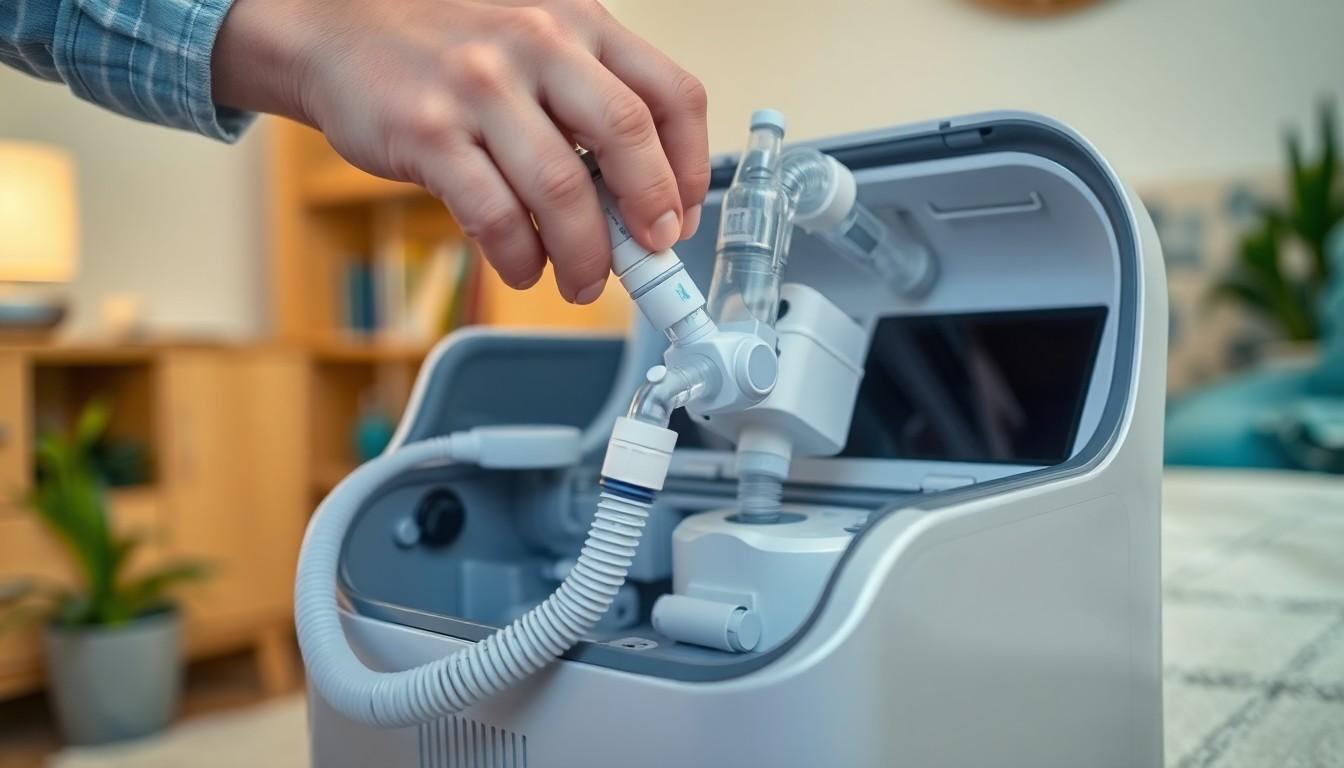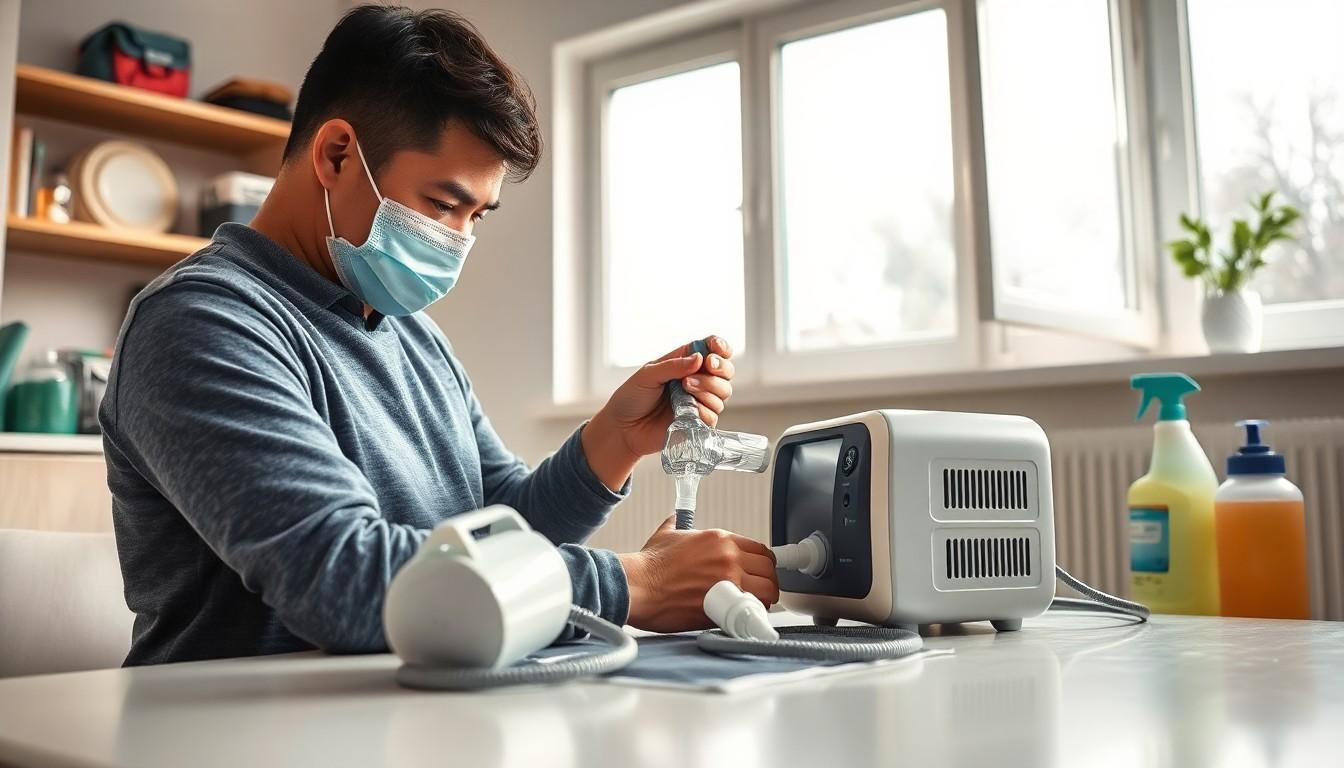Keeping CPAP machines clean is essential for maintaining good respiratory health but questions persist about the safety of ozone-based CPAP cleaners. These devices have gained popularity as a convenient cleaning solution yet their use of ozone (O3) has sparked concerns among healthcare professionals and users alike.
The FDA has issued warnings about ozone CPAP cleaners citing potential health risks when ozone gas is inhaled or absorbed through the skin. While manufacturers claim these devices offer effective sanitization many experts question whether the benefits outweigh the possible dangers. Understanding the facts about ozone CPAP cleaners helps users make informed decisions about their equipment maintenance routine.
How Ozone CPAP Cleaners Work
Ozone CPAP cleaners use activated oxygen (O3) molecules to sanitize CPAP equipment. These devices convert regular oxygen into ozone gas through electrical discharge or ultraviolet radiation.
The Science Behind Ozone Sanitization
Ozone sanitization operates by breaking down harmful microorganisms at a molecular level. The process involves:
- Converting O2 molecules into O3 through electrical charges
- Releasing ozone gas into a sealed cleaning chamber
- Creating oxidation reactions that destroy bacteria cell walls
- Decomposing back into regular oxygen after sanitization
- Box-Style Cleaners
- Enclosed sanitization chamber
- Accommodates mask masks tubing components
- Timer-controlled ozone release cycles
- Built-in activated carbon filters
- Portable Sanitizers
- Compact tubular design
- Direct connection to CPAP tubing
- Battery-powered operation
- Automated cleaning cycles
| Type | Cleaning Time | Ozone Concentration |
|---|---|---|
| Box-Style | 30-60 minutes | 0.5-5.0 ppm |
| Portable | 20-40 minutes | 0.1-2.0 ppm |
Safety Concerns With Ozone CPAP Cleaners

Ozone CPAP cleaners generate unsafe levels of ozone gas during the sanitization process. The FDA has identified multiple safety issues with these devices, leading to strict regulatory actions and public health warnings.
FDA Warnings and Regulations
The FDA issued explicit safety communications regarding ozone-based CPAP cleaning devices. These devices lack legal marketing authorization for CPAP sanitization in the United States, with no verified safety or effectiveness data. Laboratory testing by the FDA revealed ambient ozone levels exceeding safe human exposure limits, with elevated concentrations persisting in CPAP machines beyond recommended post-cleaning wait times.
Potential Health Risks of Ozone Exposure
Ozone exposure from CPAP cleaners presents significant health risks to users. Direct contact with ozone gas causes:
- Respiratory irritation leading to coughing fits
- Throat inflammation resulting in breathing difficulties
- Lung tissue damage from prolonged exposure
- Chest pain accompanied by shortness of breath
- Decreased lung function affecting oxygen intake
- Worsening of existing respiratory conditions such as asthma
Table: Safe vs. Detected Ozone Levels
| Measurement | Safe Level (ppm) | Detected in CPAP Cleaners (ppm) |
|---|---|---|
| Ambient Air | 0.05 | 0.5-1.0 |
| Residual Post-Cleaning | 0.0 | 0.2-0.4 |
Alternatives to Ozone-Based Cleaning

Safe alternatives exist for CPAP cleaning that avoid the risks associated with ozone exposure. These methods provide effective sanitization while maintaining FDA compliance standards.
Manual Cleaning Methods
Manual cleaning represents the most reliable method for maintaining CPAP equipment. The process involves:
- Disconnecting all components from the power source
- Washing masks daily with mild soap water
- Soaking headgear weekly in gentle detergent
- Rinsing tubes thoroughly with distilled water
- Air-drying all parts on a clean towel
- Using vinegar solutions (1:3 ratio) for monthly deep cleaning
- Replacing filters according to manufacturer schedules
- Emit specific wavelengths of UV-C light to kill bacteria
- Complete sanitization cycles in 5-10 minutes
- Target common pathogens without harmful residue
- Operate without generating toxic byproducts
- Work effectively on masks tubing machine components
- Provide automated sanitization tracking
- Meet established safety standards for home use
| Feature | UV Sanitizers | Manual Cleaning |
|---|---|---|
| Time Required | 5-10 minutes | 20-30 minutes |
| Daily Cost | $0.10-0.15 | $0.05-0.10 |
| Equipment Life | 12-18 months | Varies by supplies |
| Effectiveness | 99.9% | 95-99% |
Best Practices for Safe CPAP Cleaning

Safe CPAP cleaning practices protect users from harmful ozone exposure while maintaining equipment hygiene. These guidelines emphasize proper timing and ventilation procedures for optimal safety.
Recommended Cleaning Schedule
- Clean CPAP mask daily with mild soap and warm water
- Wash headgear twice weekly to remove oils and residue
- Soak tubing in warm soapy water weekly for thorough sanitization
- Empty and dry humidifier chamber daily to prevent bacterial growth
- Perform deep cleaning with vinegar solution monthly
- Replace filters according to manufacturer specifications
- Allow all components to air dry completely before reassembly
- Place CPAP cleaning equipment in well-ventilated areas with open windows
- Position cleaning devices away from living spaces or bedrooms
- Wait 2-4 hours after cleaning before handling equipment
- Store cleaned components in ventilated spaces to prevent moisture accumulation
- Maintain room temperature between 68-72°F during cleaning processes
- Keep cleaning area separate from sleeping quarters to minimize exposure risks
- Check ventilation systems regularly for proper air circulation
| Component | Cleaning Frequency | Drying Time |
|---|---|---|
| Mask | Daily | 30 minutes |
| Tubing | Weekly | 2 hours |
| Headgear | Twice weekly | 4 hours |
| Filters | Monthly replacement | N/A |
| Humidifier | Daily emptying | 1 hour |
Conclusion
The safety concerns surrounding ozone CPAP cleaners can’t be ignored. With FDA warnings lack of legal marketing authorization and potential health risks these devices pose significant dangers to users. While the convenience of automated cleaning is appealing safer alternatives like manual cleaning and UV sanitization offer proven effective methods without the associated risks.
CPAP users should prioritize their respiratory health by following recommended cleaning schedules and proper maintenance practices. By choosing FDA-compliant cleaning methods and maintaining good ventilation they can ensure their CPAP equipment remains clean and safe for daily use.
